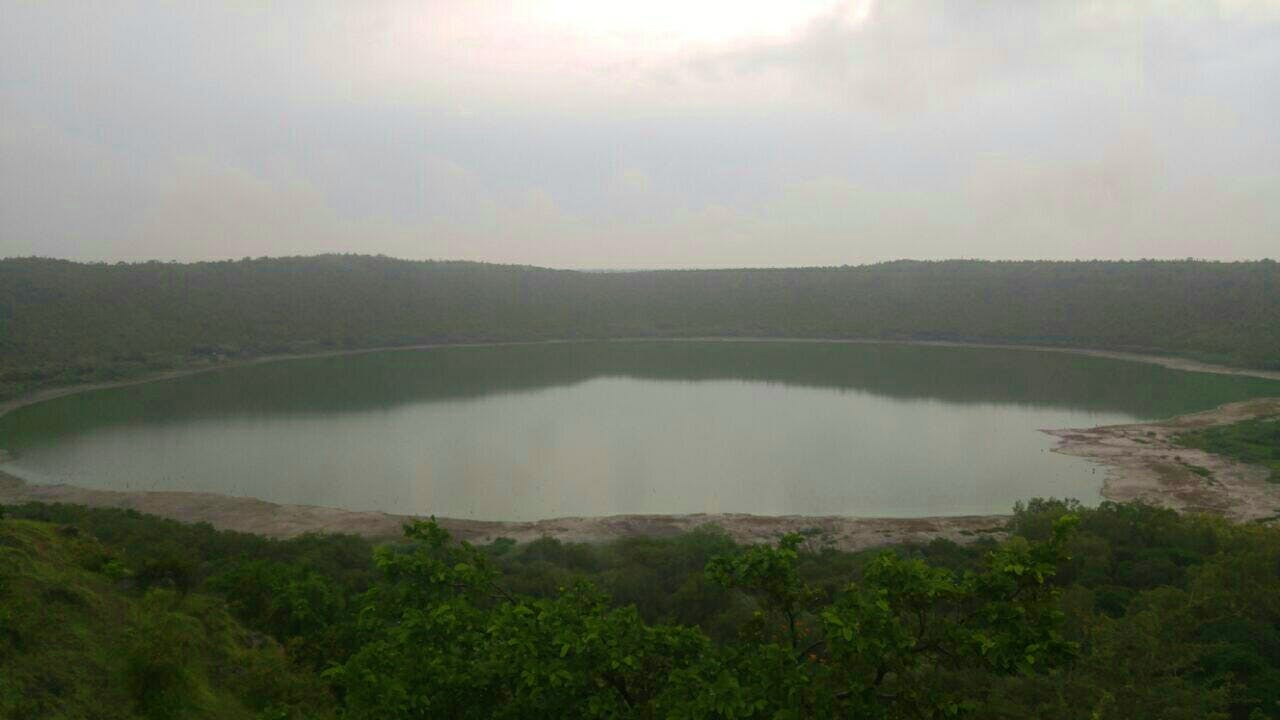Lonar Lake is a notified National Geo-Heritage Monument saline soda lake located at Lonar in the Buldhana district of Maharashtra, which was created by a meteor impact some 50000 or so years ago, and it is the only known hypervelocity impact crater in basaltic rock anywhere on Earth.
The chemical characteristics of the lake show two distinct regions that do not mix - an outer neutral {pH 7} and an inner alkaline {pH 11} each with its own flora and fauna. The lake is a haven for a wide range of plant and animal life. Resident and migratory birds such as black-winged stilts, brahminy duck, grebes, shelducks {European migrants}, shovellers, teals, herons, red-wattled lapwings, rollers or blue jays, baya weavers, parakeet hoopoes, larks, tailorbirds, magpies, robins and swallows are found on the lake. Among reptiles, the monitor lizard is reported to be prominent. The lake is also home to thousands of peafowls, chinkara and gazelles.
The chemical characteristics of the lake show two distinct regions that do not mix - an outer neutral {pH 7} and an inner alkaline {pH 11} each with its own flora and fauna. The lake is a haven for a wide range of plant and animal life. Resident and migratory birds such as black-winged stilts, brahminy duck, grebes, shelducks {European migrants}, shovellers, teals, herons, red-wattled lapwings, rollers or blue jays, baya weavers, parakeet hoopoes, larks, tailorbirds, magpies, robins and swallows are found on the lake. Among reptiles, the monitor lizard is reported to be prominent. The lake is also home to thousands of peafowls, chinkara and gazelles.

